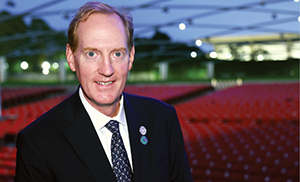Q: What lessons should convenience retailers take from the NACS State of the Industry Summit to build on the future?
 Charlie McIlvaine, Chairman and CEO, Coen Markets Inc., Canonsburg, Pennsylvania
Charlie McIlvaine, Chairman and CEO, Coen Markets Inc., Canonsburg, Pennsylvania
“One of the big messages for our industry is this: We have to embrace our reality. Until we do, we can’t move forward. We are in a transitional state. We are coming out of the pandemic and pandemic-related crises into something we don’t know yet as the new normal.
First, our in-store transactions and fuel gallons are down versus 2019. Revenues are up, but you can’t get addicted to cents per gallon. If your business model depends fully on fuel, that’s at your peril. Today, we’re not quite there on the inside-store model.
Second, we’re in the middle of the labor crisis. We’re up 17% versus 2019 in terms of wages and labor. That’s a big number. There’s a supply and demand problem. People have taken themselves out of the workforce, and we are at a negative birth rate. When the stimulus came in, the savings rate went up, and credit card debt went down. Now, the savings rate is going down, and credit card debt is going up, so people will start to bridge the difference with a paycheck. That should put some more economic pressure on people to go back into the workforce.
Third, we know what good looks like, and what we can do is take some of the lessons from the top decile performers and try to apply them. Only the top four deciles make money inside the store. By deciles, I mean that we took all the participants who submitted data to the NACS SOI Survey, and we cut them in tenths. When we look at in-store operating profit, revenues minus expenses, for the top decile relative to the other ones, it’s a huge difference. Foodservice is a major component of it. The top decile has nearly six times the amount of foodservice sales versus the bottom decile.
The fourth lesson is, don’t get paralyzed by change. We can’t allow ourselves to be stymied by the dynamic environment. Use this time as an opportunity.
EV, for instance, is probably slower to adopt than some may think. Regionally it’s a real factor, especially on the U.S. coasts, but the adoption curve may not be as steep. Convenience does not have a money-making business model on EV today. We’re laying the groundwork for the future. Many people are holding back because there’s no technology available that can get that broad cross-section of potential users with the time dimension that they’re looking for. Maybe there’s only a limited number of c-stores that really make sense for EVs.
As we’ve done in the past, we should go back to the future and remind ourselves that adaptation is a big component to convenience, and we’ve adapted several times in the past.
Another important thing to remember is what convenience is. It’s a powerhouse of a retail channel in American life. Every day, half of America goes into convenience stores. That’s almost 165,000 transactions a day, and 90% of America lives within 10 minutes of a convenience store. About 80% of our customers are repeat customers, and they want that human touch. So, we offer convenience. We offer community connection. We have relevance to American society. We need to teach, continue to show and convince customers what good is. Good is us.”